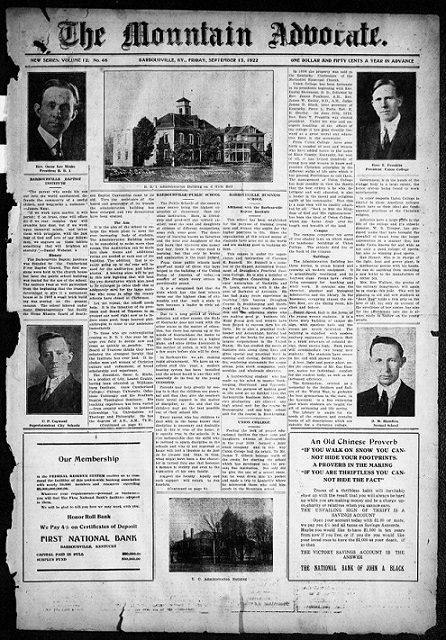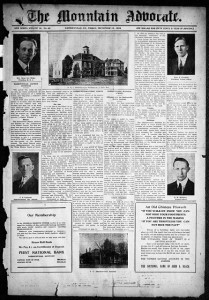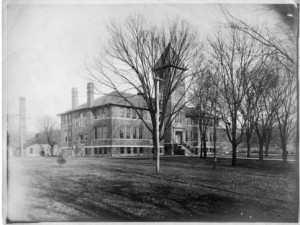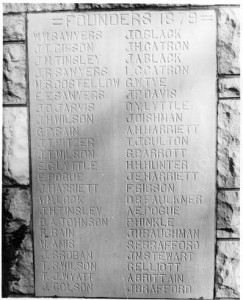Nestled at the base of the Appalachian Mountains sits a tiny liberal arts school, Union College. Up until a few weeks ago I had barely even heard of this college, let alone paid any attention to it or imagined its relevance to me. This apathetic feeling quickly subsided when my grandmother told me that we were related to one of Union’s founders, John Davis Jarvis.
After reading some old newspaper clippings from the 1870s, I learned that my great-great grandfather, and the other 437 citizens of Barbourville, Kentucky, felt that his town was lacking in proper education and decided to build a college in order to solve this problem. Jarvis, along with a few other stockholders, immediately began to round up funding for land, professors, and students for this new school that would provide the citizens of Kentucky with an opportunity to get a higher education (Mountain Advocate). In 1879, Union College officially opened. Its ten acre campus was home to a few small buildings, such as Centennial Hall , where a list of the founders is engraved in stone on the front walkway. When the college was sold to the Kentucky Conference of the Methodist Episcopal Church in 1886, Union began attracting current and future clergy members. Young men and women across the state of Kentucky flocked to the liberal arts college in order to earn their degrees and practice Christian principles in different walks of life. Union professors and faculty focused on creating community leaders by molding students into representations of strong Christian morals and faith.
Even though it only taught a handful of students at first, Union played a large role in the urbanization of America in the late 19th and early 20th centuries. During the education boom, small colleges acted as vehicles for the transition of young people from farming to more urban professions. These institutions of higher learning were also founded in order to prepare ministers and other clergy (Katz). John Jarvis and the founders of Union understood these potential benefits of founding a local college, and they worked quickly and tirelessly in order to open the school as soon as possible.
Today, Union College continues in its academic success. Its student population has increased to 870 undergraduate and 271 graduate students who represent 30 states and 13 countries. Union now offers 30 majors, a number that is steadily growing. It is home to Fulbright Scholars, winning athletics, and dozens of other academic programs (Timeline). After several generations, Union is still thriving, and I am excited that I am connected to such a prestigious school. John Jarvis was determined to give those around him a chance to grow and improve through education, and I am proud that I am related to a man that continues to leave a lasting mark on today’s generation and on generations to come.
Works Cited
Katz, Michael B. “Review: The Role of American Colleges in the Nineteenth Century.” History of Education Quarterly 23.2 (1983): 215-23. JSTOR. Web. 01 Apr. 2015.
“Timeline of Union College.” Union College. N.p., n.d. Web. 28 Mar. 2015.
“Union College.” The Mountain Advocate [Barbourville] 15 Sept. 1922: 1. Print.
“Union College.” Union College Founders, 1879 :: Union College. N.p., n.d. Web. 28 Mar. 2015.



